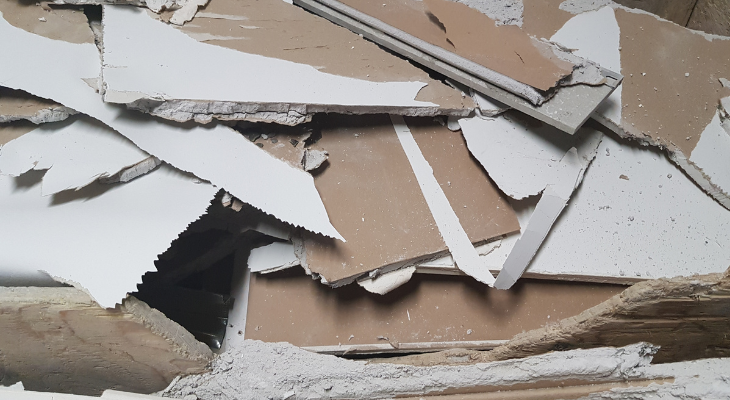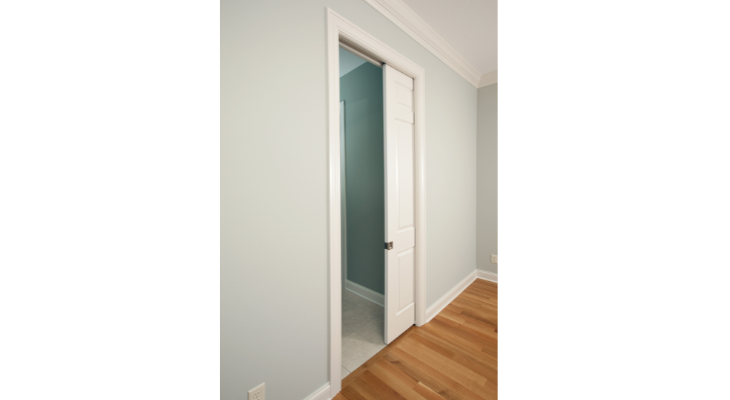Pocket doors have become a popular choice for both residential and commercial properties. Pocket doors are sleek, space-saving solutions for tight spaces. Whether retrofitting an old wall or starting fresh, knowing how to install them correctly is key to maximizing both function and style.
This comprehensive guide aims to provide you with detailed insights on pocket door installation, addressing common queries like how to install a pocket door in an existing wall, the feasibility of installation in a 2×4 wall, and the potential disadvantages of pocket doors.
Key Takeaways
-
Yes, you can install a pocket door in an existing wall, but it requires removing drywall and possibly reworking framing, plumbing, or wiring.
-
Pocket doors can fit into 2×4 walls, but may require thinner doors or building out the wall.
-
Proper planning, framing, and alignment are essential for smooth operation.
-
Pocket doors are great space-savers but may lack sound insulation and secure locking options.
-
A dumpster rental helps manage construction debris from wall modifications.
Can you install a pocket door in an existing wall?
Yes, you can install a pocket door in an existing wall. It requires removing drywall, adjusting framing, and possibly rerouting plumbing or wiring. While more complex than installing in new construction, it’s completely achievable with proper planning or professional help.
Understanding Pocket Door Installation
A pocket door slides into a hidden compartment within the wall, saving floor and swing space. This makes it ideal for compact areas where traditional doors are impractical. The installation involves creating a cavity within the wall to house the sliding door.

Installing a Pocket Door in an Existing Wall
Yes, pocket doors can be installed in existing walls. You’ll need to remove drywall and potentially framing to create space for the door. This process often generates substantial debris, considering this, it’s advisable to plan for construction cleanup by booking a dumpster rental. Having a dumpster on-site will facilitate efficient and easy cleanup, ensuring that the work area remains safe and uncluttered.
Be aware of electrical wiring, plumbing, or load-bearing structures inside the wall. Consulting a professional is advised to ensure safe and efficient installation.
Can You Install a Pocket Door in a 2×4 Wall?
Pocket doors are typically designed for 2×6 walls. Installing in a 2×4 wall is possible, but it may require using a thinner door or building out the wall to fit standard hardware. This adds complexity, but it’s a viable solution with proper materials and tools.

Step-by-Step Pocket Door Installation
1. Preparation
-
Choose the location carefully: Identify where the pocket door will be most functional, typically in areas where swing space is limited.
-
Check inside the wall: Use a stud finder to locate framing, wires, or pipes. If obstructions exist, determine if they can be relocated or if the door position needs to change.
-
Gather tools and materials: Have your pocket door kit, saw, level, drill, framing materials, and safety gear ready before starting.
2. Framing the Wall
-
Cut and remove drywall: Open the wall where the door and pocket frame will go, exposing the studs.
-
Modify framing as needed: Remove studs in the pocket area and build a reinforced header and king studs around the new opening.
-
Ensure level and support: Use a level to confirm your new framing is plumb and sturdy enough to support the frame and track.
3. Installing the Pocket Door Frame
-
Fit the pocket frame in place: Position the frame into the newly created wall opening.
-
Level and plumb: Use shims to make precise adjustments so the frame sits evenly and won’t shift.
-
Secure to studs: Screw or nail the frame to surrounding studs according to the manufacturer’s specs, double-checking for any warping or tilt.
4. Hanging the Door
-
Install the rollers: Attach hanging hardware to the top of the door, ensuring it’s aligned for smooth movement.
-
Mount the door to the track: Lift the door and place the rollers into the track carefully.
-
Adjust for alignment: Test the slide and make fine-tune adjustments with the roller screws so the door doesn’t rub or wobble.
5. Finishing
-
Patch the wall: Install new drywall or repair the opening around the frame to integrate it with the surrounding wall.
-
Add trim and casing: Install decorative trim around the door opening for a polished look that matches the room’s style.
-
Install hardware: Attach door pulls, locks, or latches per your needs and design preferences.
-
Paint or finish: Blend the wall repair into the room with paint, wallpaper, or texture as desired.
Disadvantages of Pocket Doors
-
Maintenance Needs
Pocket doors rely on hidden rollers and tracks, which can collect dust or debris over time. This means periodic cleaning and occasional part replacement is needed to keep the door sliding smoothly. -
Reduced Sound Insulation
Because pocket doors don’t create a tight seal against the door frame like traditional hinged doors, they can allow more sound to pass through—making them less ideal for bedrooms, bathrooms, or offices where privacy is a priority. -
Complex Installation Process
Installing a pocket door—especially in an existing wall—requires cutting into the wall structure, potentially relocating wiring or plumbing, and precise framing. It’s more labor-intensive than simply hanging a swing door. -
Limited Lock and Handle Options
Due to the door sliding into the wall, you’re restricted to recessed handles and specialized locks. This can limit your design choices and reduce security compared to standard doors.
Final Thoughts
Pocket doors combine form and function for anyone looking to free up space. While installation—especially in existing structures—can be challenging, the benefits often outweigh the effort. If you’re tackling this project, plan ahead and use professional support when needed. And don’t forget to manage the mess with a dumpster rental to keep your workspace clean and safe.
Looking for a FREE Quote?
Our Dumpster Consultants are waiting to help you find an affordable solution to your waste disposal needs; we can’t wait to help you with your project!
Start Your Pocket Door Installation Today!
Pocket door installation offers an innovative solution to space constraints, adding both functionality and aesthetic appeal to any room. Whether you are renovating an existing space or building a new one, understanding how to install a pocket door is essential.
By considering the structural requirements and potential limitations, one can effectively incorporate sliding pocket doors into their design, unlocking space and adding a modern touch to their interiors. Remember, while